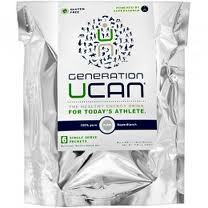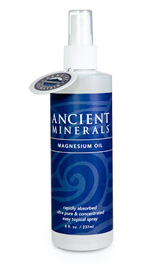Supplements that make you faster!
Race Day Supplements.
These are the supplement that I have researched that can be used during your event to help your body perform better. Don’t do anything new on race day, so practice with these supplements during your training.
There are 4 MUST have race day supplements and they are:
Master Amino Pattern and/or Vespa
UCAN SuperStarch
Extreme Endurance
Magnesium Oil
Amino Acids
(Master Amino Pattern and Vespa)
If you an avid exercise enthusiast, you are likely using gels, protein bars and sports drinks. If have been paying attention what are in these products, you may have noticed that Amino Acids are being added to many of these products.
these products, you may have noticed that Amino Acids are being added to many of these products.
Why are Amino Acids being added to all the gels, bars, and sports drinks and is it worth the extra money to buy products that contain Amino Acids?
Before we get into whether Amino Acids are worth the money, and more importantly, do they work, we need to talk a little about what Amino Acids are and what exactly they do.
When most people here about Amino Acids, they think of Amino Acids are the building blocks of proteins. However, the role of amino acids goes way beyond building blocks – they are essential for the synthesis of proteins, enzymes, hormones, neurotransmitters and numerous other metabolic pathways in the body.
This might get a little boring, just like your 9th grade biology class, but hang in there, this might just be your sercert performace weapon.
Amino Acids fall into two catagories; Essential Amino Acids (EAA’s) and Branched Chain Amino Acids (BCAA’s). In this article we will focus on the Essential Amino Acids.
Essential amino acids can’t be made by our bodies, we have to get them from our diet. The essential amino acids, which are Phenylanine, Valine, Threonine, Tryptophan, Isoleucine, Histidine, Arginine,Leucine and Lysine.
How can these EAA’s help your performance? Let’s break it down.
Phenylalanine has a pain-killing and antidepressant effect. This means you could be happier and feeling less pain while doing those killer hill or threshold workouts.
Valine, Isoleucine and Leucine, are both Essential and Branched Chain Amino Acids. These essential amino acids can reduce the amount of damage to the muscles during exercise. This means amino these amino acids can help your muscles recover faster.
Serotonin, a brain neurotransmitter that can reduce pain and the amino acid Tryptophan is a precursor for serotonin. This means taking Tryptophan can increase your tolerance to pain and therefore you might be able to train or race a little harder.
Histidine has some antioxidant properties. This means Histidine could help you fight off the cell damaging free radicals you produce during exercise,
Arginine is a vasodilator, which means it increases blood flow. There have been many studies that show Arginine is helpful for people with cardiovascular disease. Does this means it would be helpful for athletes? No real studies showing that it improves performance, but when I am running I will take improved blood flow over restricted blood flow any day.
So there are the basics on why these essential amino acids are showing up in sports nutrition products.
Are they worth it?
Amino acids allow you to push through pain, they allow your muscles to recovery faster and they affect neurotransmitters that make you feel better. Could you have used any of those during your last race?
I recommend Master Amino Pattern (MAP). It is a little pricier than most amino acids, but with almost all supplements, you get what you pay for and this is simply the best.
He is a review of Master Amino Pattern from Ultra Runner Podcast.
UCAN Superstarch is a slow release carbohydrate. Since is slow releasing you avoid rapid fluctuations in glucose and blood sugar  spikes and crashes. Since it is a high molecular weight it is rapidly emptied from your stomach into your intestines and this means, easy on your gut. It is then eventually completely absorbed into your blood stream. Another benefit of a slow releasing carbohydrate is that it still allows your body to burn your own fat as a fuel source.
spikes and crashes. Since it is a high molecular weight it is rapidly emptied from your stomach into your intestines and this means, easy on your gut. It is then eventually completely absorbed into your blood stream. Another benefit of a slow releasing carbohydrate is that it still allows your body to burn your own fat as a fuel source.
Check out this video;
Stop Muscle Burn! Clinically Proven, Published Study & Certified Drug Free.
During intense training, don’t just “hit the wall” with muscle burn and pain – BLAST through it with Extreme Endurance, a revoluti
onary athletic performance formula. It’s clinically proven to reduce lactic acid by 15% and increase aerobic threshold by double digits.
All ingredients are in compliance for IOC, NCAA, NFL, NBA, NHL and MLB. Every single batch of Extreme Endurance is tested for banned substances by the world class sports doping control laboratory, HFL Sport Science. In order to provide re-assurance that the product is suitable for use by elite athletes, the product is approved under the Informed-Sport and Informed-Choice programs.
Magnesium Oil
Rub magnesium oil, like Ancient Minerals Magnesium Oil, into your muscles before y

our race.
Transdermal magnesium chloride mineral therapy enhances recovery from athletic activity or injuries. It reduces pain and inflammation while propagating quicker regeneration of tissues. Topical application of magnesium chloride increases flexibility, which helps avoid injury. It also increases strength and endurance.
That’s it. Take those supplements for that extra edge during your next event.
Oops! I almost forgot about one. We can never do any type of event or race without salt or electrolytes, right?
Well, that is what the sport drink companies are telling us.
Personally, I have not use salt tabs in years.
Make sure you watch this video by Dr Tim Noakes:
The following comes from Ben Greenfield new book, “BEYOND TRAINING: MASTERING ENDURANCE, HEALTH & LIFE”
“In the interview, Dr. Noakes introduces an argument against the worldwide brainwashing that has been done by the Gatorade Sport Science Institute – particularly the brainwashing that has caused exercise enthusiasts and athletes to rush out and down electrolyte drinks, powders and capsules during hot and humid exercise sessions.
For nearly a decade, I was one of those athletes.”
“But here’s the deal: your body is very, very good at regulating electrolyte status of the blood and cells. If it was not good at this, then you would die or become severely ill very easily if you were sweating without water intake for a even a dozen minutes. And this just isn’t the case.”
“Instead, when you have too little sodium on board, the body excretes less sodium in the kidneys, urine and sweat, thus shutting down losses. And when you have too little water, the body excretes more sodium in the kidneys and sweat so that you maintain a proper electrochemical gradient.”
“Furthermore, when you have too much sodium, the body excretes excess sodium in the kidneys, urine and sweat. And therein lies the rub: people take a bunch of sports drink or electrolytes to workout, find that they’re losing lots of sweat or seeing white salt deposits on they’re skin, assuming they’re losing salt (oh no!) and begin a vicious cycle of consuming even more electrolytes.”
“Noakes points out multiple studies that have shown people going for days with no salt or electrolyte intake and doing just fine at exercise. In one study, a group of soldiers perform an extremely intense march in the heat and humidity that lasted all day. Although they lose liters of sweat, all they did was drink water. No electrolyes.
And at the end of the march, their plasma sodium levels were the same as when they had started. Their body simply held on to it’s salt stores. But studies like this get suppressed by sports drink manufacturers.”
“In addition, we’re taught that the body has finite salt stores of about 10,000mg, so at normal salt losses of 1000-2000mg per hour, you could only go somewhere between 5 and 10 hours before you start to cramp. In reality, your salt stores are many, many times more than 10,000mg.”
“So if lack of electrolytes doesn’t cause cramping, what does? In most cases, cramping is due to fascial adhesions and lack of mobility (revisit the mobility chapter), neuromuscular fatigue from pushing your muscles harder than you’ve pushed them in previous races or workouts, areas of scar tissue from previous injuries, or very low hydration levels. To learn more about this, listen to this Tri Talk Episode #74, which is an extremely thorough audio about mitigating muscle cramps.”
“Since I’ve spoken with Dr. Noakes, I’ve competed in over a dozen Half Ironman events, two Ironman triathlons and multiple long training sessions in the heat with zero electrolytes, and did just fine, with zero cramping. The only people who may need to worry about electrolyte intake during exercise are folks who have been on a low-sodium or mineral-deficient diet for a long time, or people with medical conditions that can affect sodium retention and loss (such as hypothyroidism).”
“So here’s the deal: electrolytes aren’t necessarily going to hurt you during exercise, but you should just know that there are probably better places to spend your supplement or exercise dollars than on useless capsules.”